Gender earnings gap: In all engineering and computer occupations, women’s median earnings are less than men’s in the same occupation. The gender earning gap size varies by discipline, with female mechanical engineers having the smallest earnings gap (95% of male median earnings). In comparison, women in fields such as civil engineering and bioengineering receive only 85% and 84% of the median earnings of their male colleagues, respectively.
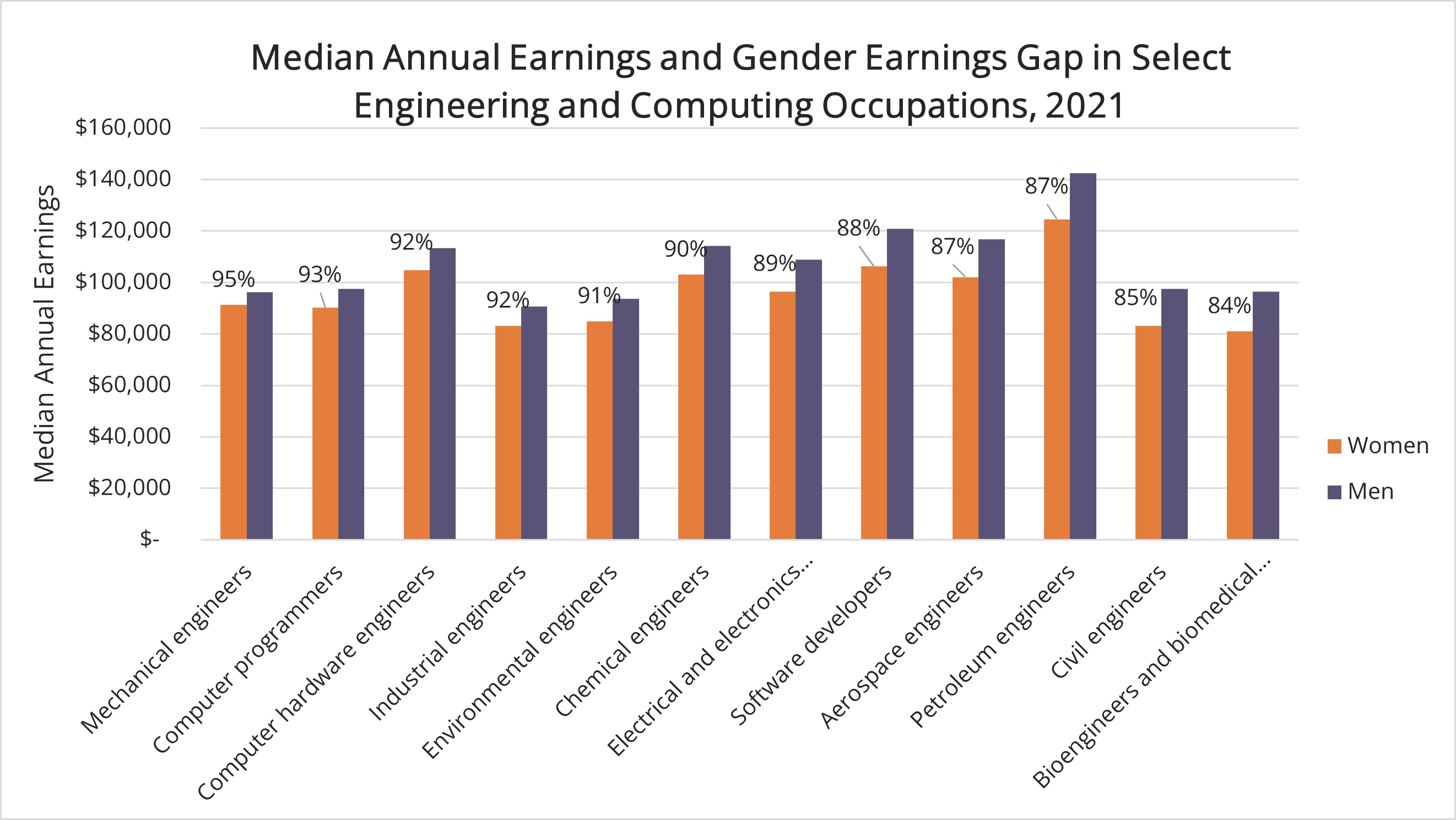
However, when analyzing the gender pay gap between women and men with the highest degree in their fields, there are certain occupations where women earn more than men. For instance, women working in petroleum engineering, on average, earn $27,000 more than men. On the other hand, women employed in environmental engineering fields have the highest gender pay gap of all engineering occupations.
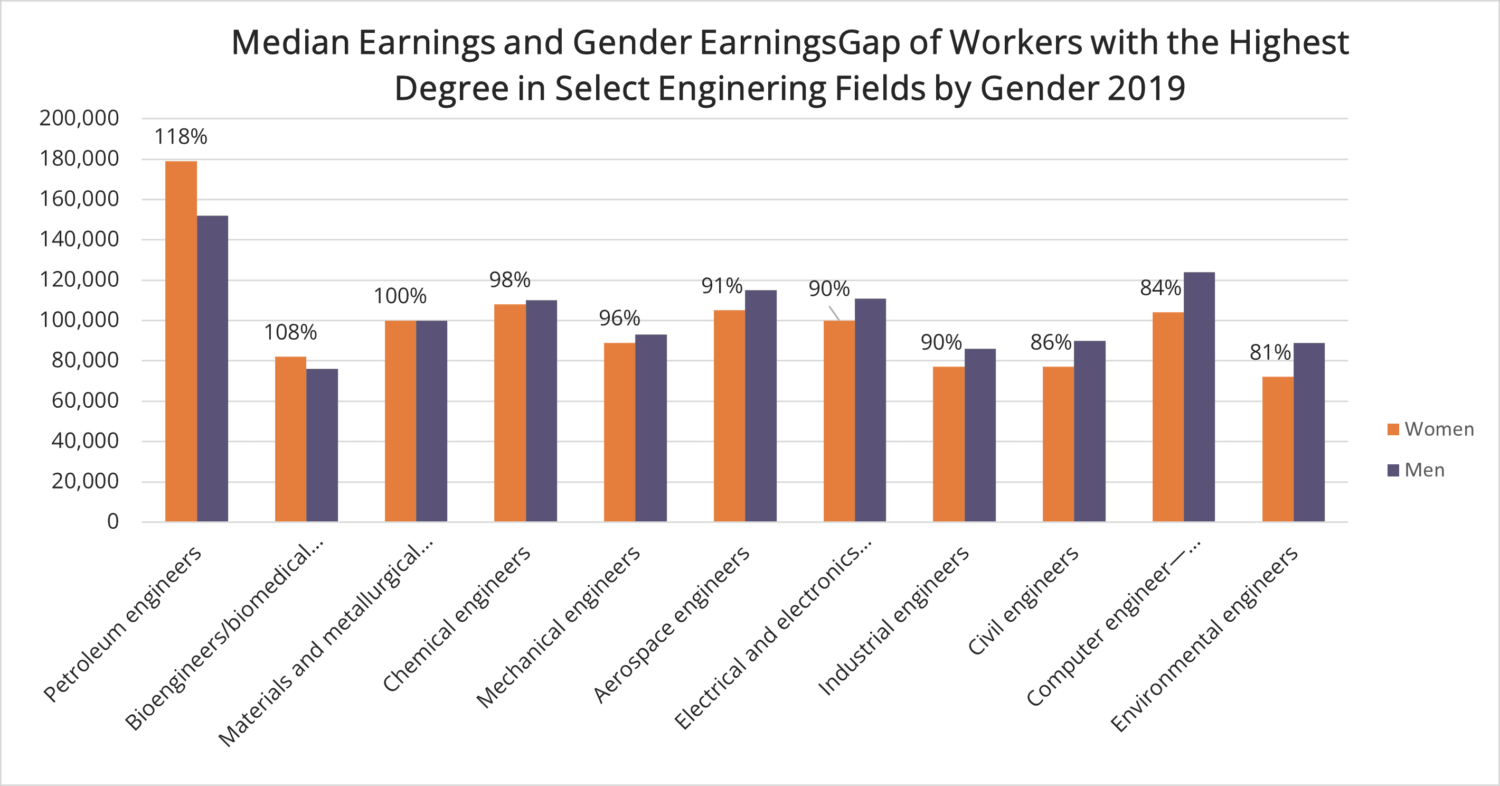
Earnings Gap for Women of Color in STEM: According to a recent report by the Pew Research Center, underrepresented minorities in STEM earn much less than their White counterparts. For instance, Black and Hispanic women earn about 86% of White women’s salaries and about 63% of White men’s salaries. However, Asian women in STEM fields earn 134% of White women’s earnings and 86% of White men’s salaries.
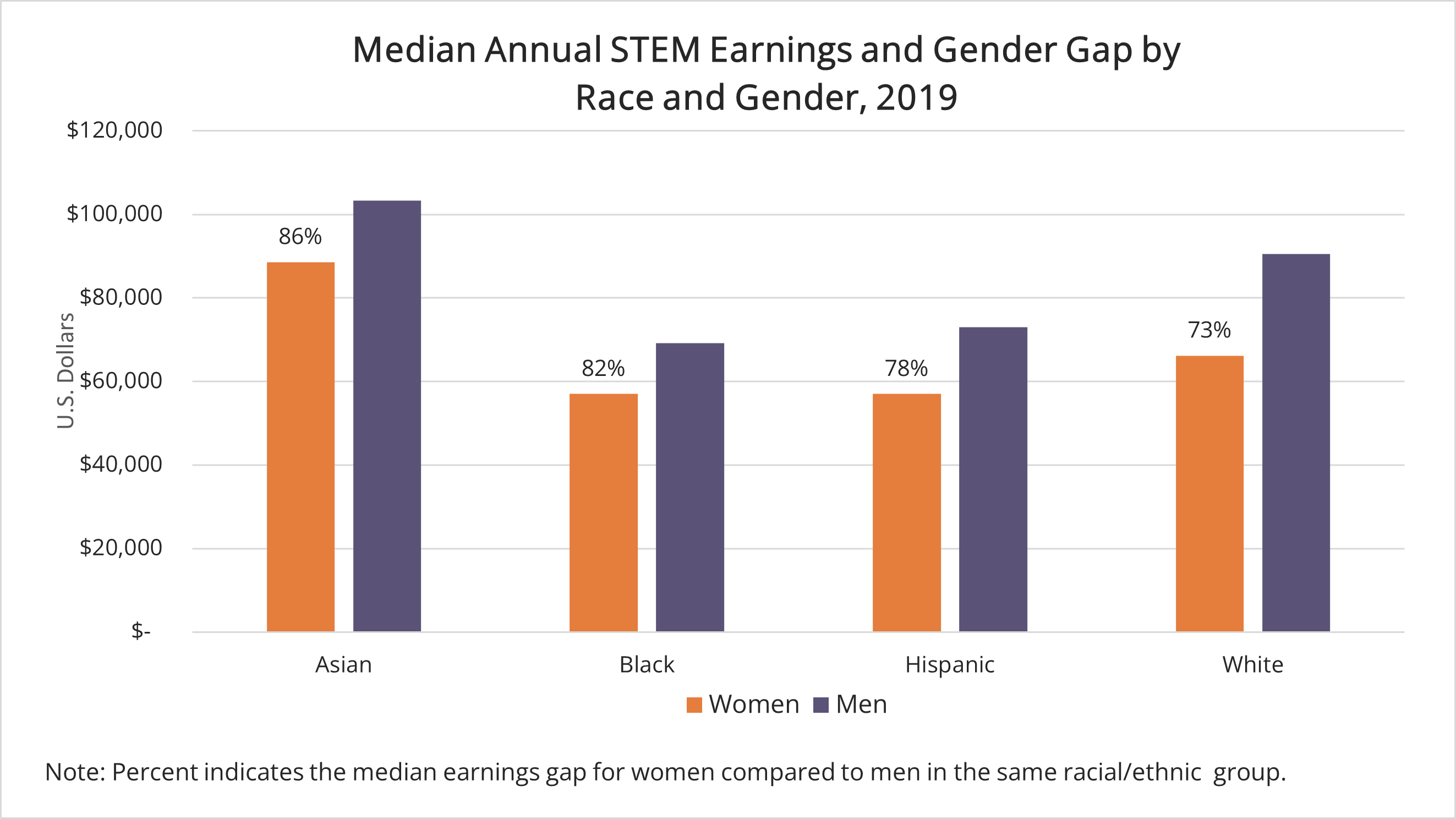
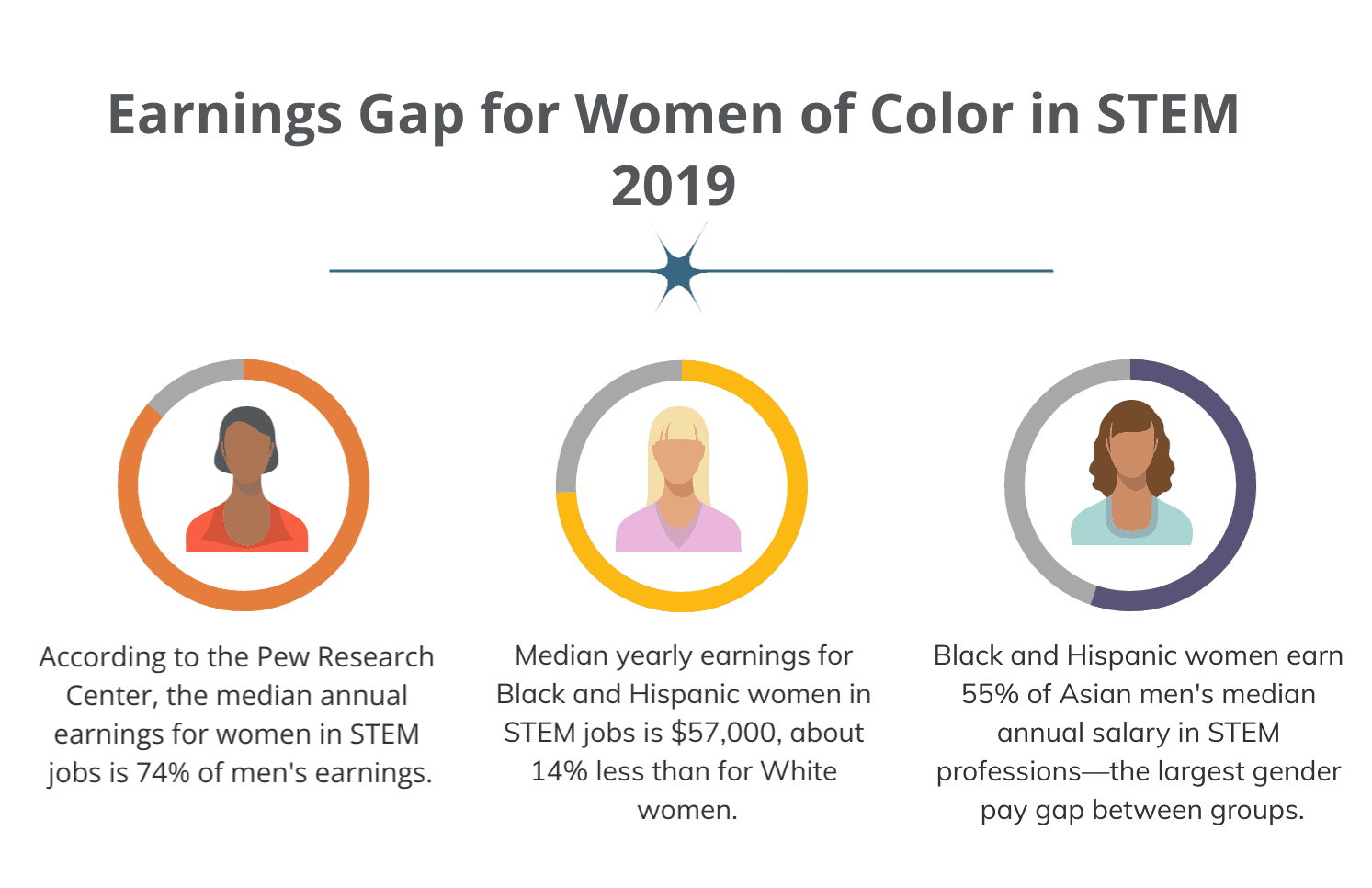
Earning Gap at Different Degree Levels: Although the salary difference between men and women with science and engineering degrees seems to decrease as the educational level attained increases, there is still a sizable difference at the doctoral level, with men earning about 21% more than women. Moreover, salary differences still persist at each post-secondary degree level even after controlling for characteristics such as, race/ethnicity, geographic region, parental education, and field of degree.
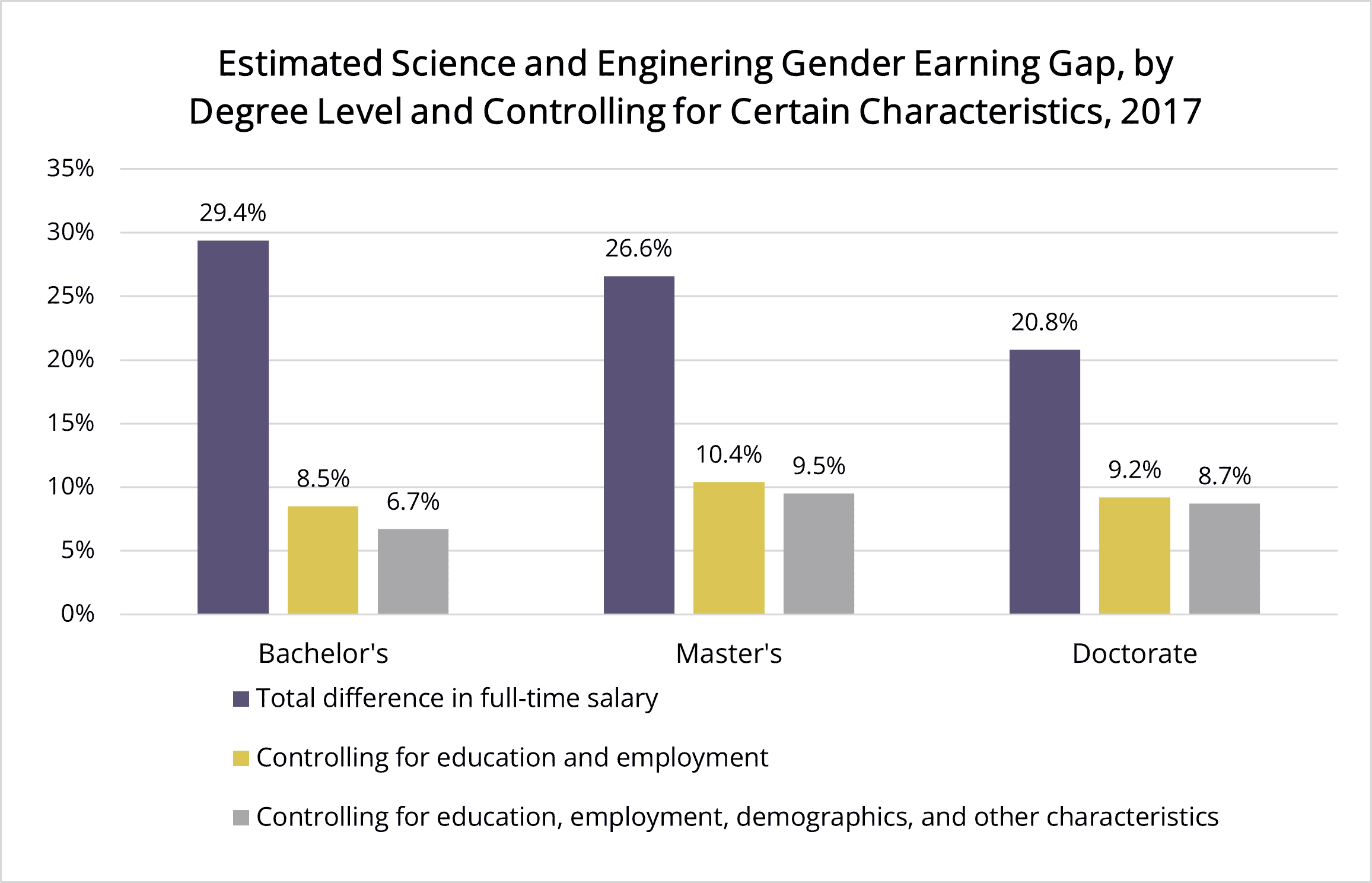
Earning Gap by State: According to data from the U.S. Census Bureau, women engineers’ average salary is between 77% and 111% of men’s average salary. Overall, women engineers in most states have average salaries that are between 80% and 89% of those of men engineers.
However, there are some regional differences. In most western states, including Oregon and Utah, women engineers are close to achieving gender parity in mean earnings or earning more than men engineers. In Nevada, for instance, while women represent only 10% of engineers, they earn, on average, $100,000, while men earn about $91,000. Still, in other western states, such as California and Washington, women earn between 80% and 89% of what men engineers do.
Download the following table here.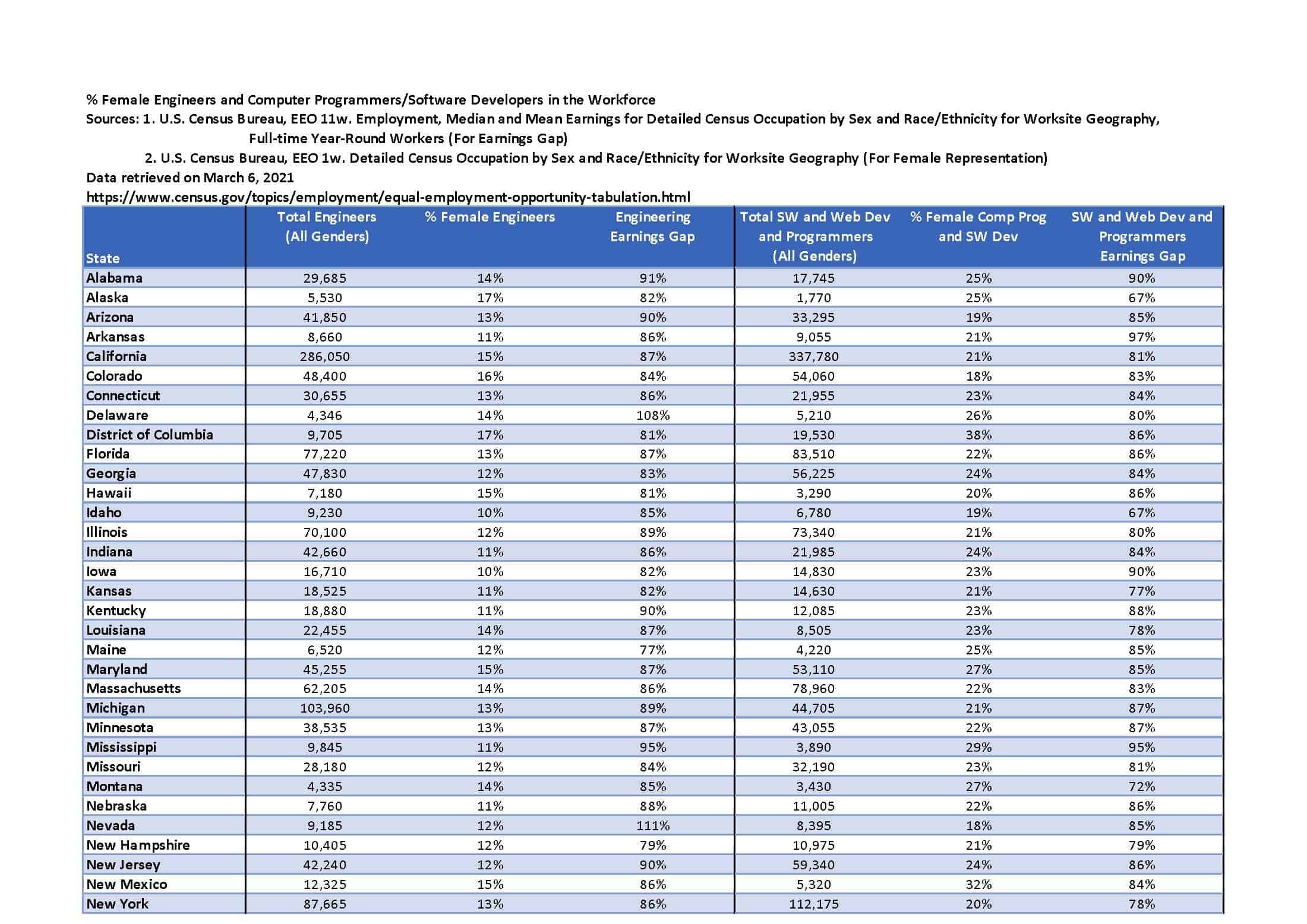
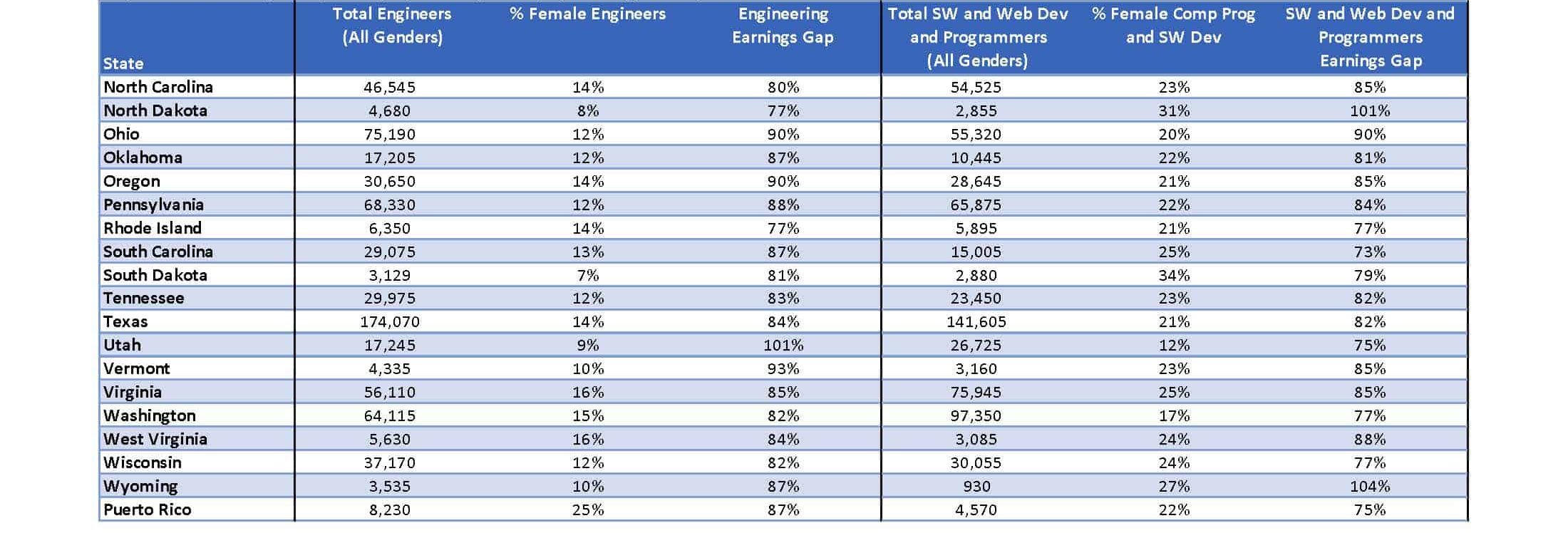
SWE Efforts to Address the Pay Gap
- https://swe.org/public-policy/
- Capitol Hill Day
- SWE Studies on Gender Bias and Workplace Experiences
Additional Resources
- National Science Board. 2022. Science and Engineering Indicators 2018. NSB-2018-1. Alexandria, VA: National Science Foundation. Available at https://www.nsf.gov/statistics/indicators/.
- Pew Research Center, April 2021. “STEM Jobs See Uneven Progress in Increasing Gender, Racial and Ethnic Diversity.” Available at http://assets.pewresearch.org/wp-content/uploads/sites/3/2018/01/09142305/PS_2018.01.09_STEM_FINAL.pdf
- 2021 American community survey (5-yr estimates), Tables B24122 and B24123, https://data.census.gov/cedsci/table?q=b24122&tid=ACSDT5Y2020.B24122